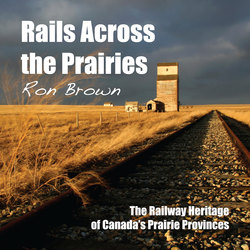Читать книгу Rails Across the Prairies - Ron Brown - Страница 7
Chapter Three
ОглавлениеThe Stations
The local nerve centres of the railways were the stations. They served many more functions than today’s generation could imagine, and the man (usually) in charge was the railway station agent. Therefore, one of the building’s main roles was to house the agent and his family, and this was almost always in an upstairs or rear apartment. The agent had to issue passenger tickets, as well as organize (and often solicit) freight shipments. To keep the trains moving, he issued train orders by “hooping” them up to the engineer on a long curved or forked stick known as a hoop. He also fixed the signal in front of the station to indicate to the engineer if he needed to slow down, stop, or continue through. Preparing the mail sack was still another duty for the agent, as many trains contained a mail sorting car right on board.
Agents also enjoyed a more aesthetic role — maintaining the station garden. Some of the earliest and largest gardens were those laid out beside the stations in Regina, Medicine Hat, Moose Jaw, and Calgary. The CPR’s first nursery was established at Wolesley, Saskatchewan, under the direction of Gustaf Bosson Krook, a Swedish-born horticulturist who held the position for twenty years. During the First World War, the gardens switched from flowers to vegetables, and after the Second World War, to parking lots. Between the wars, greenhouses in Winnipeg, Calgary, and Moose Jaw were providing 125 different varieties of flowers and shrubs.
While a community’s first station was more likely than not to be either a converted boxcar or passenger coach, Canada’s railways quickly got down to building more substantial stations. How big depended upon the business emanating or projected from that location. Once the designs became more elaborate, the railway station became the signature of the rail line that was building it, which each line having distinctive patterns.
The CPR was the first railway to cross the Prairies. In its haste to reach the Pacific coast, which was the goal behind the company’s creation, it very quickly erected stations. Its first president, William Cornelius Van Horne, sent a common station plan to contractors along the line: a very simple full two-storey building with gable ends, usually with a single storey freight wing. These served for twenty years or so until the CPR, to attract more business, devised a greater variety of more aesthetically pleasing station designs, primarily for small-town way stations.
